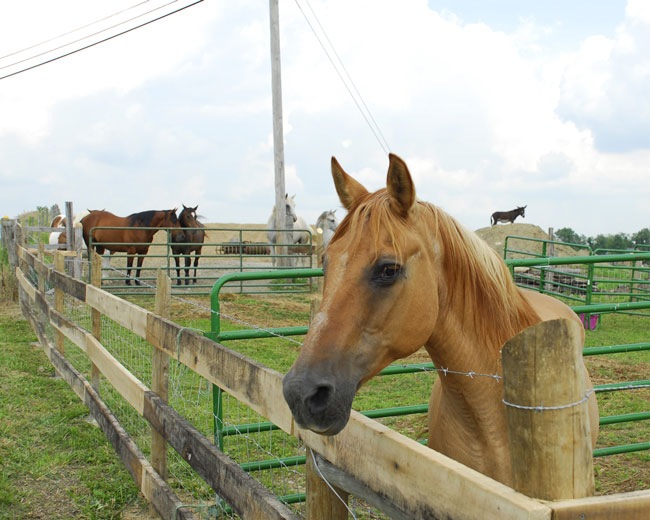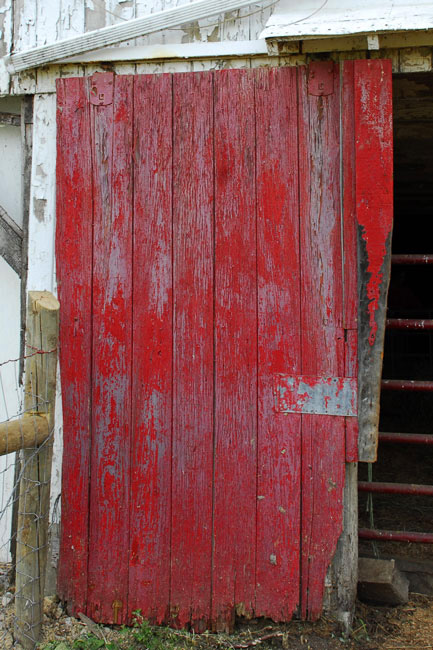JACOBSBURG—Julie Larish promised herself—and God—that if her family got away from the abusive situation in which they lived and into safety, she would try to provide sanctuary to others. She fled to the West Coast and built a new life, the foundation for her venture, R. J. Ranch & Riding Center, now that she’s returned to her hometown.
Larish’s training in medical assisting got her a position in the California mental health system. A local sheriff set her up with a horse ranch--a lifelong interest—where Larish saw her own daughter develop confidence and self-esteem as she spent time with the horses. Another little girl also inspired Larish’s pursuit of equine therapy programs. She was wheelchair-bound and not communicative, but began riding and interacting with the horses on the ranch. Larish says this girl not only walks and talks now, but shares her story of recovery through equine therapy with others.
Larish eventually moved to Idaho to start her own ranch with equine therapy programs and teach college courses in horse behavior, horse nutrition and horseback riding. One of her clients had to get rid of her horses and told Larish about her Arabian left with a trainer who was starving the animal. Rescuing Berica was an important move for Larish.
“I was leery of Arabians because they aren’t like other horses,” Larish explains. “You can tell other horses what to do. After working with Berica, it came to me: other horses react; Arabians think. Once I realized that they have this special connection with humans, training was easier. She was one of the best horses I ever had. I miss her every day.”
Berica, who passed away a few months ago, not only lived out her life as a top therapy horse, but was named the “2008 4-H Horse of the Year” in the state of Idaho for her therapy work.
How does equine therapy, or equine assisted therapy (EAT,) work? As early as 600 BC the Greeks were riding horses as a means of therapy, and it came to the United States in the 1960s from Europe. While other animals have been used in treatments, horses have been found very effective because of their size, non-judgmental attitudes, their ability to respond immediately to direction and their characteristic “mirroring” of their riders’ emotions. This provides quick feedback to the rider, to the instructor and to the therapist.
Generally speaking, a therapist (psychological, occupational or speech) determines the patient’s primary needs. They may stem from an illness, an injury, an impairment or abuse. Patients may not even touch the horse at first. With the help of an equine instructor, he or she may need to get comfortable with the horse’s size or even being in a farm environment. The patient may take the reins and walk the horse around the arena, then work up to feeding, brushing and grooming the horse. This is good for patients who need to work on trust, self-esteem and motor skills.
Riding a horse builds confidence and helps muscular illnesses by working, stretching and strengthening the body’s muscular-skeletal systems. At RJ Ranch riders have up to three attendants with them—one leading the horse and one on each side of the rider to ensure the rider is stable. Larish also has riders not use saddles when possible to further work the muscles and get to know the horse’s muscular responses to commands. Patients involved with EAT often show marked improvement quickly, sometimes at many levels, because they are focusing on the relationship with the horse rather than the therapy.
“It psychologically boosts confidence. If you can control a 1,200 pound horse with your pinkies, what can you do with the rest of your life?” Larish adds.
Larish was running her successful ranch in Idaho when her mother called asking if she could “come back home.” She decided to make the move and bring her ranch with her. Restoring a 200-year old farm wasn’t exactly part of the plan, but Larish says, “I called the owner about using the fields, and I bought it.”


































